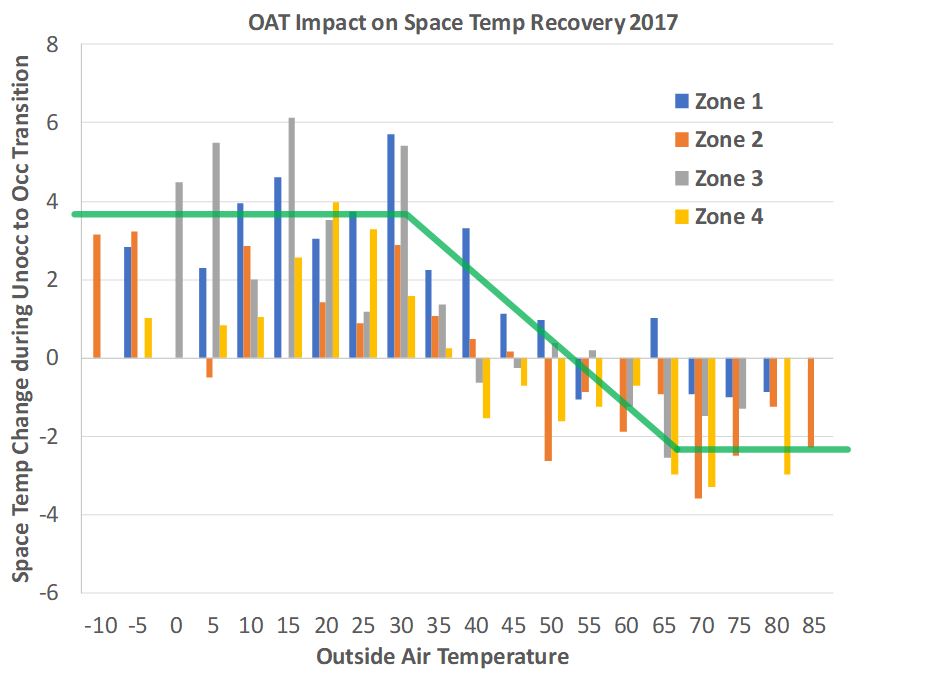Today there are a multitude of energy metering devices (e.g. data loggers) available to enable the analysis of building systems functionality. There are many different types of data loggers, each with a different purpose. To get the most from your building using energy metering, you need to narrow your options with your overall goals in mind. Before we install meters on a system, whether it’s an electrical system, HVAC system, or domestic hot water system, we must first determine what type of data we need and what the data will be used for. With this information, we put together a metering plan that will produce the data necessary for the analysis. I am going to provide two specific examples of systems/equipment we metered, including why we were performing the metering, how we did it (what types of meters), and what the findings were. Both of these examples showed the equipment being metered was not working as intended.
Meter Type: Onset’s Hobo Acceleration (Tilt) Logger
Example: On a retrocommissioning project, there were multiple existing air handlers with outside air dampers for both ventilation and economizing. We chose to use a data logger to determine if these outside air dampers were working correctly (opening and closing during appropriate economizer temperatures and positioned to provide the appropriate amount of ventilation).
Why: This damper is an important factor for ensuring the functionality of the air handler economizer (energy savings opportunities) and providing sufficient fresh air to the interior of the building.
How: To test this, we installed a tilt logger on the actuator arm of the dampers. This tilt logger records position relative to an axis, so it’s important to make sure it's installed and angled in a way that provides data that make sense. I recommend deploying the tilt logger for a short period of time, downloading the data to ensure it's correctly recording, and then redeploying it for the full metering period.
Findings: We found that one of the outside air dampers was not functioning and wouldn’t open or close based on outside air temperature or ventilation requirements. This meant the economizer mode was not utilized, making the building use more energy than required, and the minimum ventilation requirements for the building were not being met.
Meter Type: Dent Instrument Power Logger
Example: At a new construction multi-family building, redundant hot water circulator pumps with variable flow for the heating system were metered. These pumps supply hot water to the baseboard heat in the residential units.
Why: These pumps were not being monitored with a Building Management System (BMS). This metering was performed to verify functionality of the pumps with the intent of seeing how the pump speed varied based on heating calls. Since the pumps were redundant (one was for back-up if the primary failed), we only metered the primary pump.
How: Because these pumps have variable flow, we used a Dent data logger with current transformers (CT) to track power consumption on each phase. The logger was placed on the source-side of the pump to capture the input power of the equipment.
Findings: It was found that the circulator pump ran at close to maximum speed throughout the entire metering period and never turned off. Due to ineffective programming, the pump was running at a higher speed than necessary, resulting in increased energy consumption.
These are two examples using only a couple of the data loggers we use for retrocommissioning, M&V, and evaluation projects.
How to Get the Most from Your Building Using Energy Metering
Data loggers allow the user to track different system components, which can be used to see if the system is working as intended or if there are specific issues that require attention. Correcting issues allows the building to operate effectively, saving building energy costs as well as ensuring the systems are providing the important services for which they were designed.
Do you have questions about how your building's systems are operating? Get in touch with us to discuss your options for metering.





